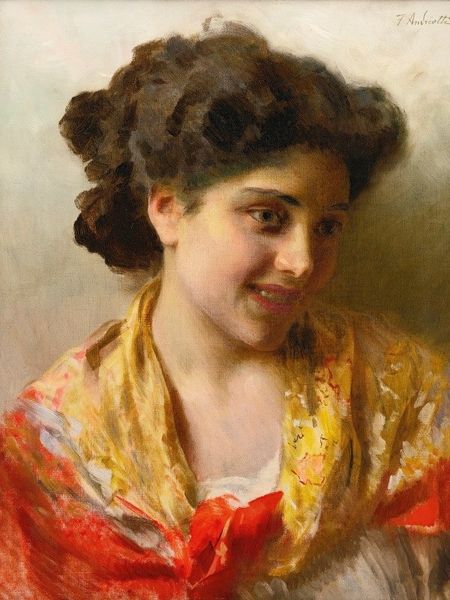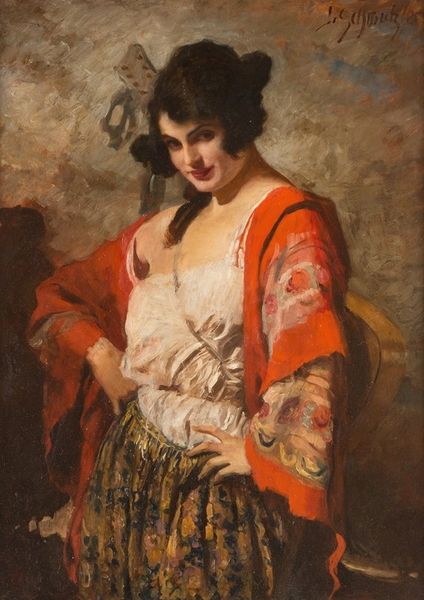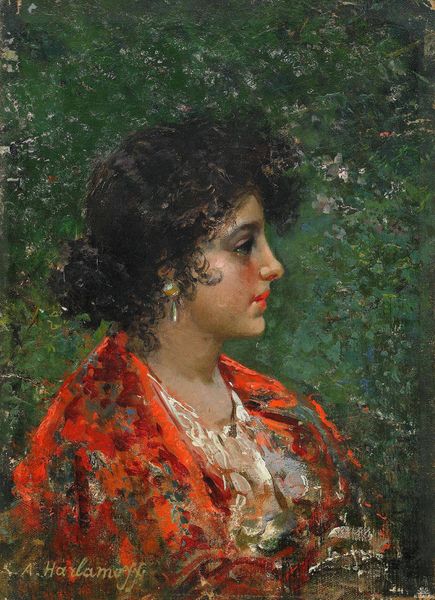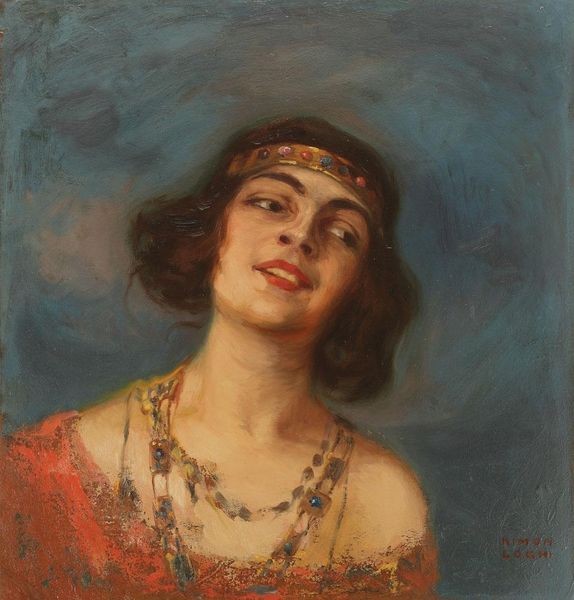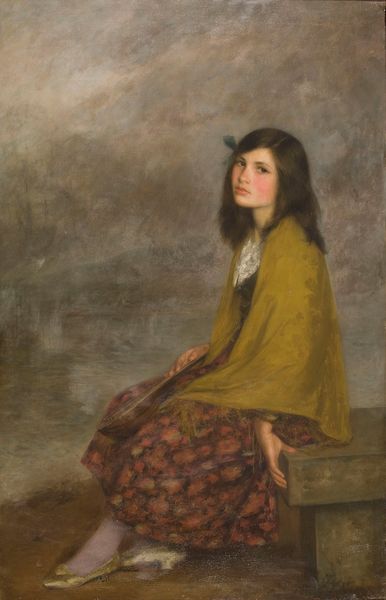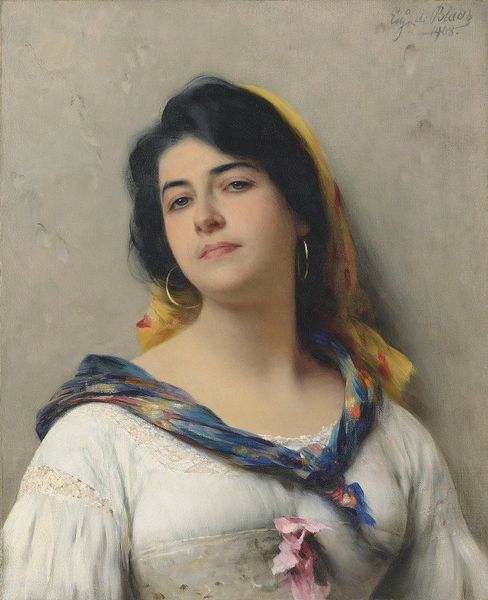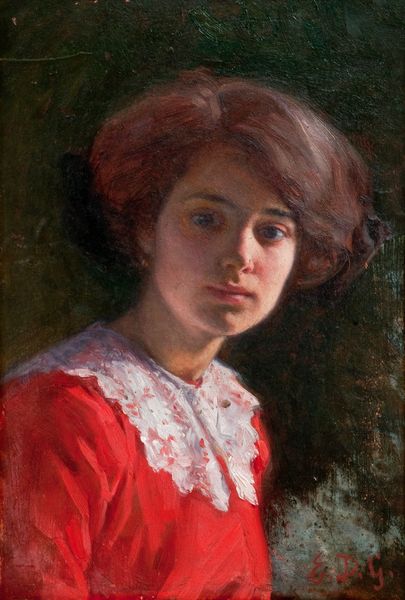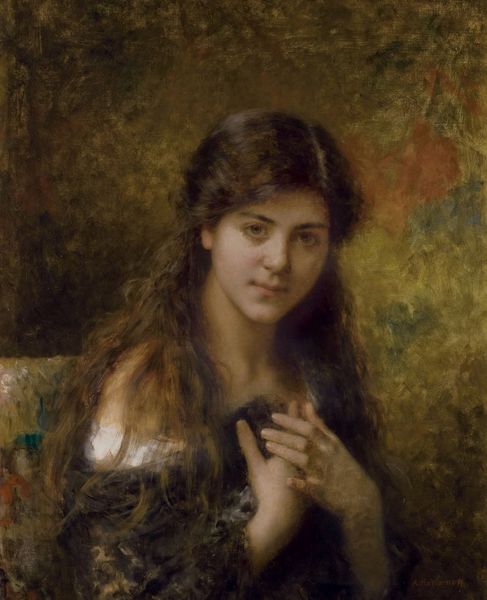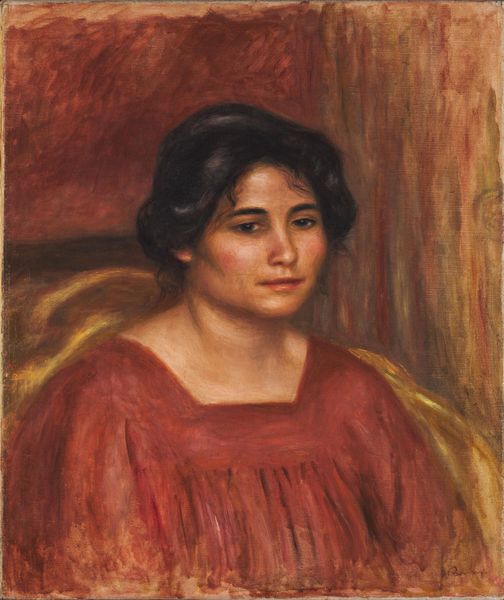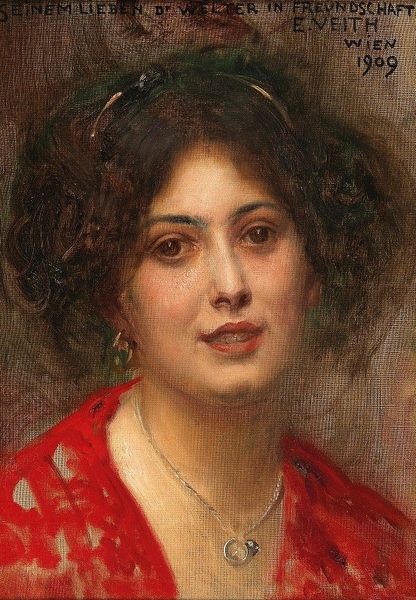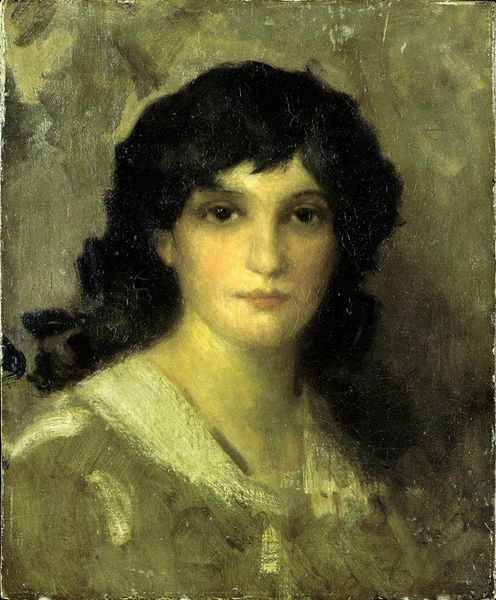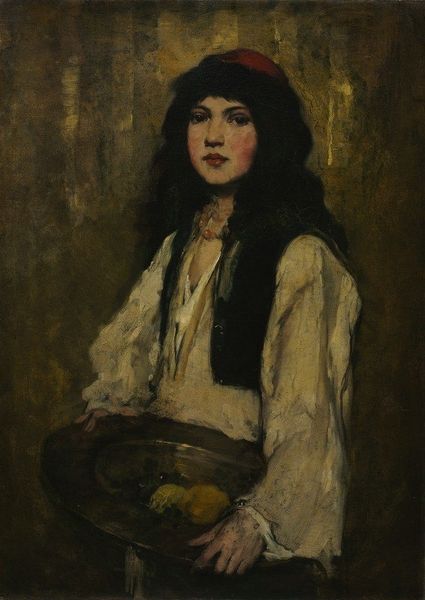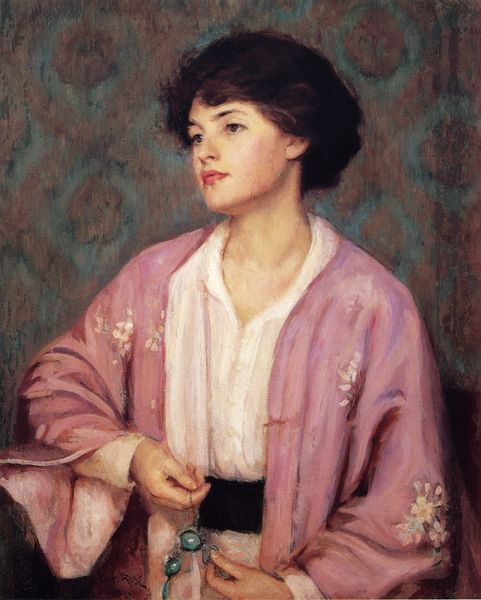
Copyright: Public Domain: Artvee
Editor: Daniel Ridgway Knight’s 1918 painting, "Lost in Thought," captures a figure in quiet contemplation. Its surface has a very gentle feeling to it. Curator: I concur. Immediately, I'm struck by how the composition guides our eye. The subtle diagonal of her red and grey kimono creates dynamism. Her gaze draws us into the work, prompting an analysis of subject and form. Editor: It's interesting that you point that out, given that Knight was an American expatriate working within a long tradition of genre painting for bourgeois patrons. The kimono immediately signals an orientalism, a production for and performance of Western luxury and privilege. What are your thoughts? Curator: Precisely! The texture itself, achieved through visible brushstrokes and impasto highlights, enriches the materiality. The vibrant reds juxtaposed with softer greens demonstrate a play with tonal values and light. Editor: Considering this use of materiality, one cannot ignore that the piece has a feeling of production to it. Note how that loose application signals a movement away from academic precision, towards the modern sensibilities of art creation. One might imagine him making this oil sketch for the domestic space of the early 20th century. Curator: I am compelled by the way the artist plays with figure-ground relationship in the upper section. This juxtaposition produces the painting's visual effect. And it does so intentionally: that gaze transcends mere portraiture, suggesting a deeper psychological introspection, a characteristic quality of Romanticism. Editor: The painting seems rooted in depicting a lifestyle accessible to certain populations. We must think of this figure as a depiction of ideal beauty, and what that entails in this cultural setting. This painting's value comes through its visual performance of access and class. Curator: In examining Knight’s brushstrokes alongside form, "Lost in Thought" exemplifies visual harmony through intentional color composition and tonal values. Its form is equally rich with layers, and I find new depth with each consideration. Editor: Analyzing it through that scope, Knight's approach is an encapsulation of material and historical forces, which ultimately reflects specific social ideologies of beauty and lifestyle. It will be interesting to continue studying it.
Comments
No comments
Be the first to comment and join the conversation on the ultimate creative platform.
